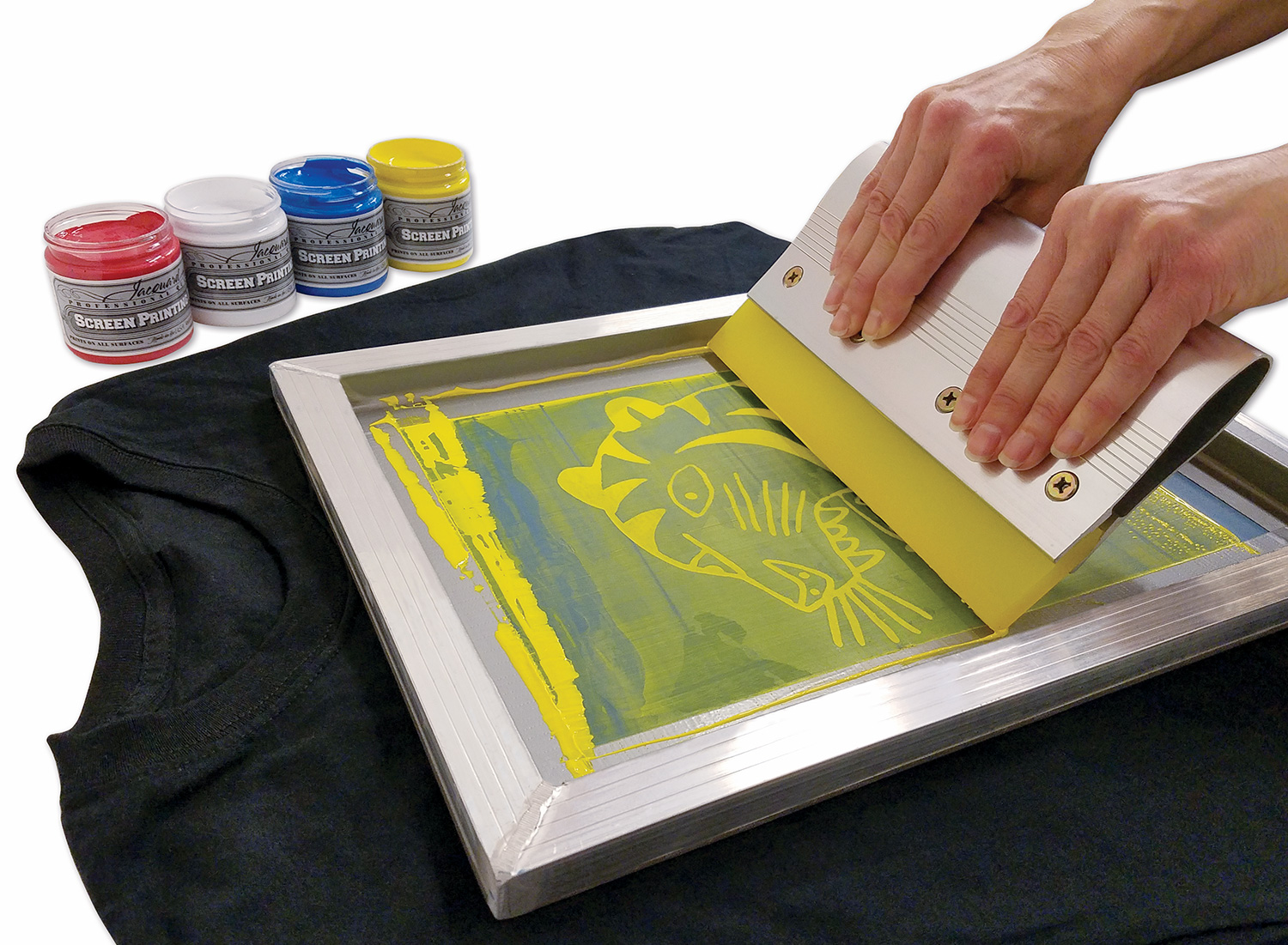The Vital Overview to Comprehending Screen Printing and Its Versatile Makes use of
Screen printing has a rich background that dates back to ancient times, progressing right into a sophisticated method utilized throughout various markets today. This overview explores the ins and outs of the screen printing procedure, describing its applications in fashion, advertising and marketing, and home décor - 10:9 Design Embroidery. Understanding these principles can open up innovative capacity for both imaginative and business tasks. The complying with sections will expose necessary ideas and strategies to improve one's screen printing ventures
The Background of Screen Printing
Screen printing has roots that map back centuries, its evolution mirrors the technical and creative advancements of different cultures. Coming from old China, the technique was at first used for embellishing textiles and later spread to Japan, where it came to be indispensable to Ukiyo-e woodblock printing. The technique moved to Europe in the 18th century, where it acquired popularity amongst artisans and commercial printers. The development of image solution in the 20th century changed screen printing, enabling more intricate layouts and higher performance. Musicians like Andy Warhol further propelled its appeal, using the tool to develop renowned works that blended commercialism and art. By the late 20th century, screen printing had established itself as a functional strategy, utilized in fashion, advertising and marketing, and art. Today, it remains to develop, incorporating electronic innovation and expanding its applications throughout various markets.
The Screen Printing Refine Explained
Screen printing transforms artistic visions right into tangible styles through a series of exact steps. Initially, a picture is developed and after that moved onto a screen, usually made of fine mesh material extended over a frame. A light-sensitive emulsion is put on the screen, which is subjected to light, setting in locations not covered by the image. After rinsing the unhardened emulsion, a stencil is developed.
Next off, the screen is positioned over the substrate, whether it be material, paper, or an additional material. Ink is then pushed with the open locations of the stencil utilizing a squeegee, transferring the layout onto the substratum listed below. This procedure can be duplicated for numerous shades, requiring separate screens for every shade. Lastly, the printed item is cured using heat to guarantee the ink adheres correctly, leading to a sturdy, vibrant design on-line.
Kinds of Screen Printing Techniques

Additionally, specialty strategies, such as discharge screen printing, get rid of color from the textile to develop softer prints, while foil screen printing applies metal foil to accomplish a shiny finish (10:9 Design near me). Each strategy provides distinct characteristics, accommodating numerous innovative needs and production ranges, eventually expanding the opportunities within the screen printing domain
Applications of Screen Printing in Various Industries

Additionally, the signs and advertising and marketing industries make use of screen printing for producing distinctive screens and banners. This method enables for bold colors and detailed designs that capture focus. In electronics, screen printing is employed for applying conductive inks to circuit card, important for element links. The home design industry accepts screen printing to create distinct designs on textiles and wall surface art. On the whole, screen printing serves as a vital tool throughout varied areas, enhancing products with individualized and visually attractive graphics.
Tips for Successful Screen Printing Projects
While taking on a screen printing task, careful attention to detail can substantially boost the last result. Initially, picking premium products is crucial; this includes the screen, inks, and substrates. Making use of ideal mesh matters can affect ink deposition and detail resolution. Prep work is just as crucial; thorough cleansing of displays and appropriate direct exposure times ensure crisp prints.
Next, exact enrollment is important for multi-color prints. Making use of placement tools can help achieve precise layering. In addition, screening prints on scrap materials before manufacturing assists identify possible problems without throwing away sources.

Frequently Asked Inquiries
What Materials Are Ideal for Screen Printing on Material?
Cotton and polyester blends are perfect for screen printing on material as a result of their toughness and ink absorption. Additionally, specialized fabrics like silk or canvas can produce special textures and surfaces, enhancing the general design high quality.
Just how Do I Clean and Maintain Screen Printing Tools?
To keep and cleanse screen printing tools, one must routinely clean screens with proper solvents, evaluate squeegees for wear, lube moving parts, and store all things in a dry, dust-free atmosphere to extend their life-span.
What Are the Environmental Impacts of Screen Printing?
Screen printing can have significant environmental effects, consisting of chemical waste from solvents and inks, water usage during cleansing procedures, and power consumption. Lasting techniques and environment-friendly products are necessary for reducing these unfavorable impacts.
Can Screen Printing Be Done in your home Properly?
Screen printing can be properly done at home with the right materials and techniques. Enthusiasts can produce top quality prints, though success relies on their ability degree, devices, and understanding of the process involved.
What Are the Costs Associated With Starting a Screen Printing Company?

Starting a screen printing business entails expenses for equipment, products, and office. Preliminary expenditures generally range from a couple of hundred to a number of thousand bucks, depending upon the scale, top quality website of equipment, and wanted production ability.
Screen printing has a rich history that dates back to old times, evolving right into an innovative technique utilized throughout various markets today. One more method, rotating screen printing, utilizes round displays, promoting continual printing on fabric rolls, thereby improving performance for massive productions. Additionally, specialized techniques, such as discharge screen printing, eliminate color from the material to develop softer prints, while foil screen printing applies metal foil to attain a glossy finish. In the fashion market, screen printing is widely utilized to develop lively designs on apparel, enabling brands to showcase their distinct styles. Cotton and polyester blends are suitable for screen printing on textile due to their toughness and ink absorption.